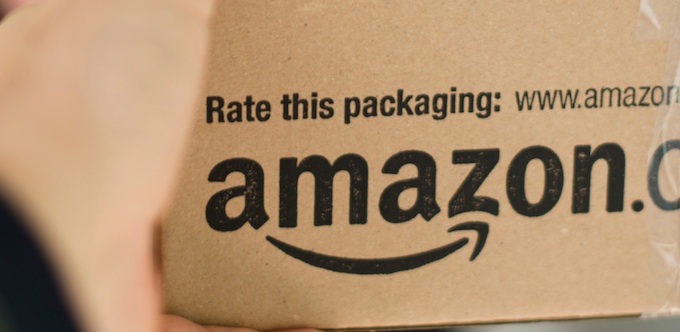
Amazon boss Jeff Bezos has had a better 12 months than any other billionaire on the planet, but while the spectre of his online shopping platform continues to follow Australian brands, some experts question how the retail giant will affect local brands.
Forbes reported overnight that Bezos is the biggest dollar gainer on its 2017 World Billionaire List with a jump in net worth of $US26.7 billion ($34.5 billion) since this time last year.
At the same time, a Credit Suisse analyst report has warned traditional Aussie retailers like Myer and JB Hi-Fi are vulnerable to a hit in earnings once the global retailer sets up shop in Australia.
While the company has not announced any formal plans to start business in Australia, it has registered 250 trademark applications here, and every retail boss in the country has a view on exactly how dire the situation is for their businesses.
Credit Suisse analysts said Myer and brands in the Premier Investments group have the highest aggregated risk weighting should Amazon launch in the country, reports Business Insider.
It also suggests Myer’s earnings before interest and tax (EBIT) could fall by as much as 29% in the 2022 financial year if Amazon arrives.
Analysts highlighted the gap in price points between Amazon and retailers like JB Hi-Fi and Harvey Norman, drawing attention to the need for businesses to come up with a “defendable range”.
Credit Suisse predicts Amazon could secure more than 5% of multiple retail categories within five years of setting up local operations.
The options for fighting
Everyone from department store chief executives to Australian supermarket heads and startup founders have weighed in on how to best fight global international retailers like Amazon, and there are three common approaches.
One is to embrace the competition under the belief that a “rising tide will lift all boats”, a position favoured by Kogan.com chief executive Ruslan Kogan, who has previously claimed the possibility of an Amazon arrival will increase the quality of Australia’s online retail landscape.
“At a high level, the potential arrival of Amazon means the biggest, hottest brands will have no choice but to put products and significant volume through online channels,” Kogan said at the company’s annual general meeting in November 2016.
Then there’s retailers that are forming their own taskforces of experts to come up with strategies that will beat the retailer through implementing new ideas. In 2016, reports emerged that Woolworths has an “Amazon Taskforce” in place.
Finally, there is a group of retailers speaking openly about the battle with the giant, who say they will compete simply by providing a better offering.
Last week Myer chief executive Richard Umbers said when discussing the department store’s half year results that he refuses to give Amazon a “free kick”, and is instead focused on creating a store offering that gives shoppers a better option, reports The Australian.
Meanwhile, retail veteran Gerry Harvey took things one step further earlier this year when he promised to “price match” with Amazon across his Harvey Norman stores.
“We will give [shoppers] the service, delivery and after sales service and they will be a lot happier,” he said in February.
“People are making very big claims”
However, Dr Gary Mortimer, retail expert and associate professor at Queensland University of Technology Business School, says he has seen some quite “alarmist” numbers on the potential impact of Amazon’s arrival that might not be in line with what eventually happens.
“Amazon is simply a platform, much like eBay,” Mortimer says.
“People are making big claims, and some of them are being quite alarmist.”
While some product areas, like consumer electronics, are vulnerable to Amazon’s lower prices, Mortimer says there are other categories that are much less vulnerable to Amazon’s business model.
“There are other areas that are less exposed, like food. At the moment, remember that with Australian online spending, the total percentage is like 7% of sales,” he says.
The ongoing development of destination retailers and shopping centres indicates in-person retail is still an attractive prospect in Australia, says Mortimer.
“We’re not going to stop going to shopping centres — and you can’t get that experience, just sitting there [shopping] on your tablet.”
Never miss a story: sign up to SmartCompany’s free daily newsletter and find our best stories on Twitter, Facebook, LinkedIn and Instagram.


COMMENTS
SmartCompany is committed to hosting lively discussions. Help us keep the conversation useful, interesting and welcoming. We aim to publish comments quickly in the interest of promoting robust conversation, but we’re a small team and we deploy filters to protect against legal risk. Occasionally your comment may be held up while it is being reviewed, but we’re working as fast as we can to keep the conversation rolling.
The SmartCompany comment section is members-only content. Please subscribe to leave a comment.
The SmartCompany comment section is members-only content. Please login to leave a comment.